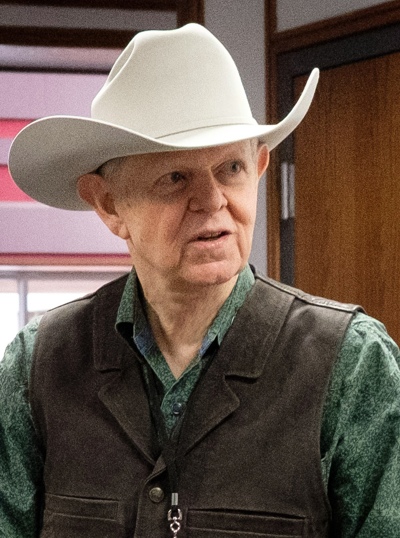
Three large animals became primary change agents on the North American continent when Columbus's second voyage in 1493 brought two of the three to the Island of Hispaniola (today's Dominican Republic/Haiti): the Andalusian horse and the bovine from the Canary Islands. The third large animal was the bison, which had dominated the continent for thousands of years. The horse and the longhorn wove an intricate saga that drove the bison to the very edge of existence. Of course, the three large animals were only the instruments of change choreographed by the flood of Old World settlers, displacing the native population from shore to shore.
Meet Bob Saul
Bob Saul was raised on a cattle ranch that was originally part of the Lazy F Ranch, founded in 1876 and purchased by Charles Goodnight in 1882 as part of the historic JA/Goodnight ranches in the caprock canyons of the Texas Panhandle at Quitaque, Texas. It remained in the family for 52 years.
Bob has served as editor, vice-president, and president of publishing companies in Texas and Tennessee. For 26 years, he maintained a dual career as a consultant in volunteer program management for four national non-profits while he owned and operated a custom software business in New York City. He is currently president of History Partners, Inc.; oooMsgs Inc.; and Academy of Western Artists, Inc.; and voluntarily serves as president of two nonprofits, MyComancheria Institute and the Texas Chapter of the Great Western Cattle Trail Association, Inc., as well as Sheriff (President) of Fort Worth Westerners Corral. Bob is also the event producer of the Lone Star Cowboy Poetry Gathering held every 3rd Thurs-Sat in February in Alpine, Texas.